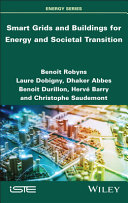

Most ebook files are in PDF format, so you can easily read them using various software such as Foxit Reader or directly on the Google Chrome browser.
Some ebook files are released by publishers in other formats such as .awz, .mobi, .epub, .fb2, etc. You may need to install specific software to read these formats on mobile/PC, such as Calibre.
Please read the tutorial at this link: https://ebookbell.com/faq
We offer FREE conversion to the popular formats you request; however, this may take some time. Therefore, right after payment, please email us, and we will try to provide the service as quickly as possible.
For some exceptional file formats or broken links (if any), please refrain from opening any disputes. Instead, email us first, and we will try to assist within a maximum of 6 hours.
EbookBell Team

0.0
0 reviewsSmart Grids and Buildings for Energy and Societal Transition examines the technologies, uses and imaginaries involved in implementing smart buildings and smart grids. Production and consumption forecasts, modeling of stakeholder involvement and self-consumption within a renewable energy community exploiting blockchain technology are examples developed with a view to fostering the emergence of smart grids. The potential of smart buildings, taking into account user comfort while increasing energy efficiency, is identified. Full-scale demonstrators are used to test the proposed solutions, and to ensure that users take full advantage of the potential for electrical flexibility.